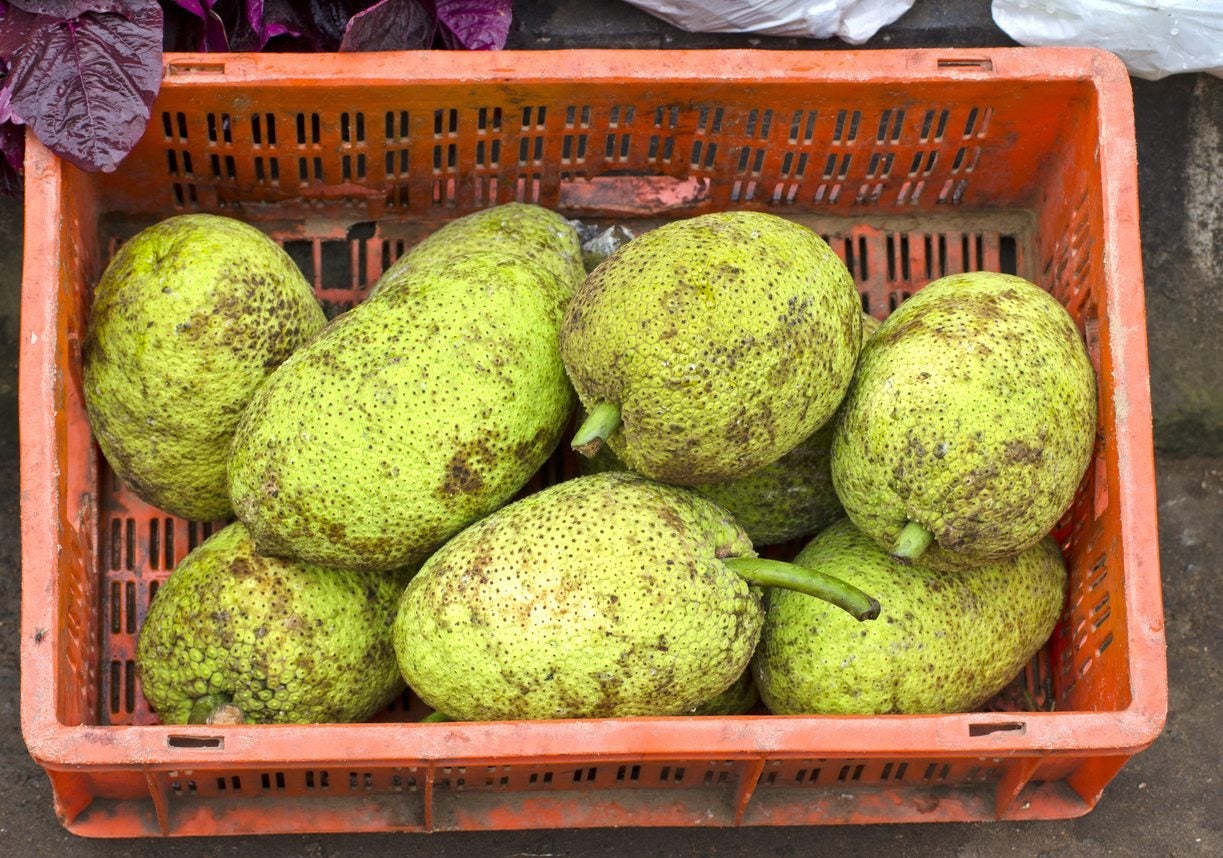
At one time, breadfruit was one of the most important fruit staples of the Pacific islands. The introduction of European foods lessened its importance for many years, but today it is gaining in popularity again. Picking breadfruit is easy if a tree has been properly pruned and trained low, but many trees have not been restrained, making harvesting breadfruit a bit more of a chore. In either case, a breadfruit harvest is worth the effort. Read on to learn about when to pick and how to harvest breadfruit.
When to Pick Breadfruit
Breadfruit can be found growing and for sale in extremely tropical regions. Breadfruit harvest depends upon the variety and location the tree is being grown. The tree fruits fairly constant in the South Seas with two or three main fruiting periods. In the Marshal Islands, the fruit ripens from May to July or September, and in the islands of French Polynesia from November to April and again in July and August. In Hawaii, the fruit is available for sale from July to February. In the Bahamas, harvesting breadfruit occurs from June to November. Breadfruit bruises easily when it is fully ripe, so it is generally picked when mature but not yet ripe. That said, it depends on what you want to use the breadfruit for. If you are using it as a potato substitute, pick when the fruit is mature but quite firm. The skin will be a green-yellow in color with some brown cracking and a bit of dried sap or latex. If you are looking to pick the fruit at its sweetest, most aromatic, harvest fruit that has a yellow-brown peel and is soft to the touch.
How to Harvest Breadfruit
When the fruit is at its peak and ripe and flavorful, it will turn yellow, sometimes brownish and often with lots of old sap on it. That is, if it hasn’t already dropped from the tree. The trick to picking breadfruit is to pick it just before it gets this ripe. Fruit that falls to the ground will become bruised or damaged. If the fruit is within easy reach, just cut or twist it from the branch. Then turn the fruit upside down to let the latex bleed from the cut stem. If the fruit is higher up, use a ladder and sharp knife, a scythe, or a long pole with a sharp, curved knife taped to it. Either attach a basket or net to the end of the cutting tool or have a partner ready to catch the fruit as it falls in a cushioned box or even with a pillow, something to keep the fruit from getting bruised. Again, turn the fruit upside down to allow the sap to flow from the fruit.
Sign up for the Gardening Know How newsletter today and receive a free copy of our e-book "How to Grow Delicious Tomatoes".

Amy Grant has been gardening for 30 years and writing for 15. A professional chef and caterer, Amy's area of expertise is culinary gardening.
